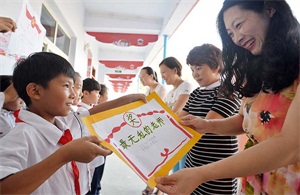Avoid middle-income trap by improving quality of labor
(chinadaily.com.cn) Updated: 2012-11-01 22:18The middle-income trap is a term that refers to the way in which many economies that have developed quickly enter an extended period of stagnation after their average personal GDP increases to about $3,000, says an article in People's Daily. Excerpts:
The average GDP per head in China is now more than $5,000, and China's economic growth is slowing down. These phenomena are raising suspicions that China will fall into the middle-income trap. Strong evidence suggests that the current supply of Chinese labor indicates the country has reached the Lewis Turning Point, or the point in a country's development at which the labor supply has been absorbed and wages begin to increase. As labor costs soar, the benefits that come with China's having a labor surplus will gradually disappear. Economic growth will then certainly slow down or even stagnate.
This is in fact only one side of the coin. On the other, China is trying its best to transform its economic growth model from being factor driven to being innovation driven. China's exports are also beginning to become strong in value competition as well as price competition.
The main decisive contributor to China's economic development will not be cheap labor but innovation, quality labor and strong domestic demand.
China is considering postponing the retirement age of citizens to lessen the consequences to its economic growth of a population that is quickly becoming more elderly. With the country’s fast pace of urbanization, the working population is also moving from agricultural to industry and services sectors. More importantly, Chinese laborers are undergoing more schooling. Each year about 6 million college graduates join the working population, many of whom make great contributions to technological innovation in various industries.
So the population dividend is not the result merely of how many laborers there are in an economy but also their qualities. If China can steadily improve the quality of its labor force and its industrial structures, it will avoid the middle-income trap.

I’ve lived in China for quite a considerable time including my graduate school years, travelled and worked in a few cities and still choose my destination taking into consideration the density of smog or PM2.5 particulate matter in the region.











